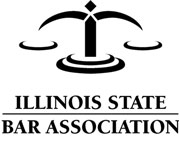Illinois Supreme Court Rule 217: An Often Unused but Useful Way to Preserve Testimony Before Filing Suit
Posted: October 28, 2015
Many personal injury firms, including our firm, handle medical malpractice and nursing home negligence cases. In many of these cases, our clients are the elderly and/or the very ill and their health outcomes are uncertain. To file a medical malpractice case is a time consuming process, which may not be conducive to an elderly and/or very ill client’s situation. In order to file a medical malpractice case, you need to have an expert physician (in the field of medicine in which the defendant doctor(s) practiced) sign off on a 2-622 affidavit, (http://www.ilga.gov/legislation/ilcs/fulltext.asp?DocName=073500050K2-622) which is essentially a physician’s report, which explains why the case is meritorious and what malpractice was committed.
This may seem like a simple step, but the time consuming part is obtaining the client’s medical records, finding the experts, providing them with the records, giving them enough time to review the records and getting them to write and sign off on these affidavits. When your client’s health outcome is uncertain, we as lawyers, should not chance it.
This is where Rule 217 (http://www.illinoiscourts.gov/supremecourt/Rules/Art_II/ArtII.htm#217) comes into play. For example, you have a very ill client, who had a delayed diagnosis of breast cancer and her prognosis is dismal, you do not want to lose the opportunity to depose her. By filing a 217 Petition, the client is able to tell her story, and you preserve her testimony.
In our firm’s case, we used Rule 217 to take a deposition for the purpose of “perpetuating testimony,” prior to filing a lawsuit. So, first, we did some investigation into our case by: (1) pulling out facts which we wanted to establish, via the proposed testimony, and the reasons behind perpetuating it; (2) gathering the names of the potential respondents (possible future defendants); and (3) getting the name and address of the person to be examined (which, in our case, was the petitioner (future plaintiff)). After you have done this, you can draft the petition, file it in the court of the county in which the lawsuit will be brought and then serve upon each person/entity named as a respondent a copy of the petition, along with a notice of the hearing (21 days in advance of it).
The rule does not clearly explain how to file it. So, our firm recently tested the waters and filed one in Cook County at the Daley Center. In this instance, we filed and paid, on the 8th Floor in the Law Division, for a “Petition for Discovery,” without a jury demand (to save some money since you will eventually file a lawsuit with a jury demand). We were given a petition number in the law division and assigned to a calendar. After we received this petition number, we served the respondents, as well as the judge, with notice of petition, along with a copy of the petition. After which, the respondents contacted their attorneys to represent them. Our firm and the respondents’ attorneys appeared at the hearing and the judge granted the petition to take the discovery and evidence depositions of our petitioner. Once the depositions were taken, we went back to court and the petition was dismissed. Now, we have preserved our client’s testimony, and helped our client’s case, without filing suit yet. Don’t forget, with videotaped evidence depositions, pursuant to Illinois Supreme Court Rule 206, the videographer must still file or send, via certified mail, a secured copy, in an envelope with the title and number of the petition, to the clerk of the court for filing.
To learn more about this medical malpractice process and determine your legal rights, contact the Law Offices of Martin Glink to schedule your initial legal consultation with a member of our firm.





